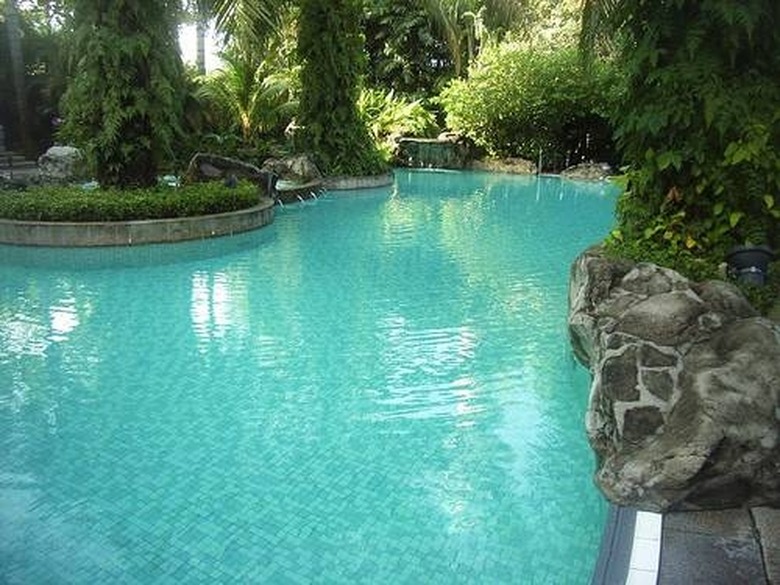How To Make A Chlorine Pool Float
Keeping a pool properly chlorinated is important to the water quality and safety of those using the pool. Outdoor pools especially are challenging to keep properly chlorinated, due to the sun reacting with the chlorine in the water. A chlorine pool float is an ideal way to easily add additional chlorine without having to constantly adjust the inline chlorinater.
Step 1
Clean the bottle and remove all paper labels if you are reusing a bottle from a different product.
Step 2
Drill at least 10 holes into the sides of the bottle. Space them around the bottle evenly.
Step 3
Glue the tennis ball to the lid of the bottle with the hot glue gun. Be sure to use a generous amount of glue for good adhesion.
- Keeping a pool properly chlorinated is important to the water quality and safety of those using the pool.
- A chlorine pool float is an ideal way to easily add additional chlorine without having to constantly adjust the inline chlorinater.
Step 4
Put chlorine pellets into the bottle.
Step 5
Screw the lid with the tennis ball back onto the bottle. Toss your new chlorine float into your pool.
Chlorine & Free Chlorine?
It is well known that chlorine in the water is a critical factor in keeping swimming pools safe for swimmers. But less well understood is that there are different types of chlorine in the water, and not all of them are "good" forms. Chlorine, or Cl, is a very common chemical. In its pure elemental form, chlorine is highly toxic to nearly all life forms, but when bonded in certain compounds, it can be used as a disinfectant to kill bacteria and algae in swimming pools or as a general-purpose bleach. The liquid chlorine, which is essentially the same as ordinary household bleach. These amounts depend on how heavily the pool is used, amount of rainfall and other conditions. Once free chlorine does its job by binding with contaminants, it is still found in the pool water but is no longer available to do its job as a disinfectant. Paradoxically, the smell of chlorine in the water means that more free chlorine should be added. Not all test kits tell you the amount of free chlorine in the water. Free chlorine should be maintained at 1 to 3 parts per million.
- Put chlorine pellets into the bottle.
- Once free chlorine does its job by binding with contaminants, it is still found in the pool water but is no longer available to do its job as a disinfectant.
Things Needed
- Tennis ball
- Hot glue gun
- Drill
- 1/4-inch drill bit
- Plastic bottle with a screw on lid and a wide mouthed opening (the opening needs to be large enough to fit your chlorine pellets into)
- Chlorine pellets
